NOTE: PaleoFX is coming up quickly and my talk will be related to some of the issues discussed below. It’s going to be a fun meeting. If you’d like to attent, buy a ticket or try your luck in FastPaleo’s PaleoFX ticket giveaway.
Marlene Zuk is an evolutionary biologist at the University of Minnesota, and her Paleofantasy: What Evolution Really Tells Us about Sex, Diet, and How We Live is an important milestone for the Paleo movement: professional evolutionary biologists and anthropologists are now responding to Paleo ideas.
I haven’t yet read Paleofantasy but I have read:
- Zuk’s 2009 piece in the New York Times, The Evolutionary Search for Our Perfect Past.
- The excerpt in the Chronicle of Higher Education, Misguided Nostalgia for Our Paleo Past.
- A number of reviews including John Hawks’s review in Nature (see also his blog post), Cordelia Fine’s in the Wall Street Journal, and Laura Miller’s review in Salon.
Of the reviews, John Hawks in Nature is the most useful. Most Paleo community members have taken the term “Paleofantasy” as an attack upon the Paleo diet and lifestyle – as an assertion that our views conflict with reality – but Hawks suggests another take:
Zuk’s use of the term ‘fantasy’ is just an emphatic way of describing the hypothesis-forming that is essential to evolutionary science. We play with hypotheses, explore their predictions and try very hard to falsify them. So it is, in a way, unremarkable that so many hypotheses proposed by anthropologists about ancient environments now seem to be wrong — and, in a few cases, even ridiculous. [1]
The title “Paleofantasy” may sell more books than “Paleohypothesis,” but the latter is undoubtedly more accurate. The Paleo movement is based on a scientific hypothesis, and exploring its validity is a very reasonable thing for an evolutionary biologist to do. The ancestral health community should be flattered, not offended, that its science is being engaged by other scholars.
The Paleo Hypothesis
What is the Paleo hypothesis? The original version was expounded by Melvin Konner, Boyd Eaton, and others in the 1980s and 1990s. Here is Melvin Konner’s (2001) summary:
One approach, applied by Eaton and colleagues since the mid-1980s, is to consider the environment of evolutionary adaptedness for our species and to view it as the shaper of the latest draft of our genome…. This approach leads us to the discordance hypothesis, which attempts to assess the disjunction between those environments and the ones we live in now … [S]everal important chronic degenerative diseases have been interpreted as “diseases of civilization” because they appear to result from this disjunction. [2]
I’ve bolded the key ideas: that humans have an “environment of evolutionary adaptedness” approximately represented by the Paleolithic, and that multiple diseases result from a discordance between the modern and Paleolithic environments.
To operationalize the Paleo hypothesis, one must identify a modern implementation of the Paleolithic diet and lifestyle – not necessarily a complete re-enactment, but mimickry in essential elements. The most influential operationalization was created by Loren Cordain in The Paleo Diet (2002) and subsequent popularizers such as Robb Wolf tracked his diet closely. Their advice can be found on Cordain’s “What to Eat” and Wolf’s “What is the Paleo Diet?” pages: eat meat, fish, eggs, nuts, fruit, and vegetables; eschew starches, dairy, and some other foods.
A Target-Rich Environment
Both the Paleo hypothesis and its popular operationalization are vulnerable to challenge.
Most vulnerable is the operationalization by Cordain. It consists of an odd mix of foods. The meats, in accordance with archaeological evidence, derive mostly from grassland herbivores, while the plant foods – nuts, fruits, and vegetables – come largely from forest plants – trees. It is almost as if the evolutionary picture was that humans are chimps who learned to hunt, and our ancestors would dwell in the forest like chimps when foraging for plants but commute to grasslands to hunt animals.
This view drives Paleo toward a low-carb diet, since modern domesticated fruits and vegetables generally have only 50 to 200 carb calories per pound, and Paleolithic fruits and vegetables had even less. It would not have been easy for Paleolithic hominids to gather and eat many pounds of forest plant foods per person per day – especially when bipeds are not suited for getting fruit and nuts out of trees, and much of the band would have been hunting animals in a sparsely-treed semi-open grassland!
Not surprisingly, anthropological evidence has found that Paleolithic diets were quite different from the meat, fruit, and vegetables diet. There is little doubt that in the Paleolithic, starchy plants were a more important source of carbohydrates than fruits, just as they are among modern hunter-gatherers.
What is interesting about Zuk’s work is that she takes on the theoretical part of Paleo – the hypothesis of modern discordance with an environment of evolutionary adaptedness. Many in the Paleo movement take this as foundational, so if it were rebutted then one might think it would call into question the whole ancestral health movement.
Zuk’s Critique of the Paleo Hypothesis
Zuk’s critique strikes me as sound but disappointingly unambitious.
The Chronicle excerpt focuses on the persistence of evolutionary change:
[I]t is easy to assume that evolution requires eons. That assumption makes us feel that humans, who have gone from savanna to asphalt in a mere few thousand years, must be caught out by the pace of modern life …
[D]iscoveries like [the timing of the development of lactase persistence] make it clear that we cannot assume that evolution has stopped for humans, or that it can take place only ploddingly, with tiny steps over hundreds of thousands of years. In just the last few years we have added the ability to function at high altitudes and resistance to malaria to the list of rapidly evolved human characteristics …
Gregory Cochran and Henry Harpending even suggest that human evolution as a whole has, on the contrary, accelerated over the last several thousand years …
In one way Zuk is understating her point. Human genetic change did accelerate significantly over the last 10,000 years, due to rising populations which introduce new mutations to the human genome more frequently [3], and due to changes in selection pressure resulting from the establishment of large-scale societies following the domestication of animals.
Yet in another respect she is exaggerating it. The time required for favorable mutations to spread through the human population hasn’t shortened much since the Paleolithic. Even the most strongly selected recent mutations, such as that for lactase persistence, have spread only partially through the world’s peoples. There has certainly been insufficient time for the rest of the genome to evolve to an equilibrium with recently introduced mutations.
Yet, in the Paleolithic, the ancestral diet was probably similar in general outline for at least 2 million years: it consisted largely of meat, marrow, and plant foods collected from open woodlands and tree-spotted grasslands. There was sufficient time for new mutations to appear and rise to fixation, and then new mutations to appear and reach fixation against this new genetic background, and so on for many cycles. It is certainly possible that humanity became adapted to this (slowly changing) Paleolithic diet, and that the genetic variety introduced in the Holocene has been insufficient to destroy our fitness for a diet like that of the Paleolithic, and insufficient to make us well adapted to new Neolithic diets.
This point – that the relevant time-scale for assessing adaptedness may be the time for the genome to reach equilibrium, not merely the time for new point mutations to appear and grow to regional prominence – is an elementary one in evolutionary biology, one that is made in our book on pages 4-6, but from the Chronicle excerpt and various reviews (including this Amazon reader review), it appears that Zuk does not acknowledge this reason why treating the Paleolithic as an environment of evolutionary adaptedness may be a “Paleoinsight,” not a “Paleofantasy.”
Nor is it necessarily the case that adaptedness to the modern environment is assured by rapid recent evolution. To illustrate my point: a diet of Twinkies and Coca-Cola could never be healthful, and could never become our optimal diet, no matter how many billions of years we spent adapting to it. It simply lacks the nutrients needed to support sophisticated life.
So Zuk’s major points – that evolution has been a process of continuous change, never reaching a stable equilibrium; and that Paleolithic environments were diverse, making it difficult to specify an environment of evolutionary adaptedness or establish modern discordance with it – do establish that the Paleo hypothesis is not automatically trustworthy and needs to be supported in any given application by specific evidence. But she did not prove that it is never useful. It may guide us to a better diet and lifestyle.
Entertaining, But Unambitious
From reader reviews, the verdict emerges that Zuk wrote an entertaining book, using “Paleofantasies” as hooks on which to hang interesting facts, observations, and insights from evolutionary biology.
But most Paleo readers seem to have wanted a more ambitious undertaking. Most Paleo reviewers seem to agree with Theodore Roosevelt, who taught that in science
It is not the critic who counts … The credit belongs to the man who … strives valiantly, who errs and comes up short again and again, … who spends himself for a worthy cause; who, at the best, knows, in the end, the triumph of high achievement, and who, at the worst, if he fails, at least he fails while daring greatly … (“Citizenship in a Republic,” speech at the Sorbonne, Paris, April 23, 1910)
Evolutionary biology has much to teach us about how we should eat and live for best health. It would be good for evolutionary biologists to spend themselves for the worthy cause of identifying those truths.
What Does the Paleolithic Tell Us About Our Optimal Diet?
Coincidentally I came across a TEDx talk on Paleo diets by archaeologist Christina Warinner that makes a creditable effort at providing an alternative operationalization of a “Paleo diet.” Ignore the first three minutes in which she calls Paleo a fad diet based on meat; the latter part of the talk is excellent.
She makes the excellent point that domesticated plants have been bred for reduced toxicity. We may now be able to eat a much healthier diet than was possible during the Paleolithic, thanks to reduced-toxicity plant foods.
Warinner suggests the following modern operationalization of the “Paleolithic diet”:
- Eat a diet high in species diversity. Do not, as Americans do, concentrate plant consumption among a mere three species: corn, soy, and wheat.
- Eat fresh foods. Stored food loses nutrients and spoils; preservatives that inhibit microbial growth may disturb our gut microbiome.
- Eat whole natural foods; avoid refined processed foods. Natural foods have a full package of nutrition and healthful fiber. We should not indulge our new-found ability to consume sugar far more rapidly than would have been possible in the Paleolithic.
These are all points we make in Perfect Health Diet:
- The benefits of diets high in species diversity are discussed in chapter 24 – because “the dose makes the poison,” diverse diets prevent toxins from becoming poisons.
- The benefits of eating “recently living plants and animals” rather than processed foods constructed of purified nutrients are discussed in chapters 2, 8, and 23.
Warinner’s three recommendations are an excellent start toward a healthy diet. It’s good to see a scholar venturing to make prescriptive suggestions.
Yet I think that evolutionary biology can tell us much more than this. To see what it teaches, we have to broaden our perspective beyond the Paleolithic and the original “Paleo hypothesis,” and venture into biology.
Maybe “Paleo” Should Stand For Paleozoic Diet
One of the novel insights of Perfect Health Diet is that the evolutionary roots of the optimal human diet are ancient – they extend back to the start of the Paleozoic Era 541 million years ago when a great flourishing of multicellular life took place.
The rise of multicellular life depended on the use of carbohydrates to glycosylate membrane proteins and to form a carbohydrate-rich extracellular matrix to support multicellular structures. This increased use of carbohydrate was the last major change in the macronutrient composition of life. As life feeds on life, it represented the last major change in food.
In Perfect Health Diet, we discuss a number of evolutionary patterns determined by evolutionary selection and indicative of our optimal diet:
- Until bodily protein is depleted, all animals tolerate fasting quite well. This is because the composition of the body closely resembles the composition of our optimal food, so that self-cannibalization is nourishing.
- Breast milk has a similar composition in all mammalian species. This is because all mammalian species – whether herbivore, carnivore, or omnivore – need the same nourishment.
- Evolution doesn’t modify the body’s composition in order to exploit a new environmental niche, but rather modifies the digestive tract’s ability to transform novel foods into the desired nutrient mix. Herbivores, carnivores, and omnivores have similar nutritional needs and similar bodies; only their digestive tracts differ. The digestive tract is evolutionarily “plastic” in a way the rest of the body is not.
- In humans, the brain’s food reward system is an important guide to our most healthful diet. As dominant hunters and skillful foragers, ancestral humans had their choice of foods. Mankind’s Paleolithic evolution developed a food reward system that helps us choose an optimal mix of foods, and that brought us a diet that required minimal transformation by the digestive tract, enabling digestive organs to shrink. This is Aiello and Wheeler’s “expensive tissue hypothesis” [4], re-interpreted.
From this perspective, the optimal human diet was determined 541 million years ago, at the start of the Paleozoic, when the composition of animal flesh was more or less fixed. From that point forward, it was evolutionarily inevitable that as soon as a creature became able to “rule over the fish in the sea and the birds in the sky, over the livestock and all the wild animals, and over all the creatures that move along the ground” (Genesis 1:26), so that the whole world became its buffet table, this creature would lose its expensive digestive tract and gain a brain capable of guiding it to a healthful pattern of eating.
Our optimal diet is deeply constrained by our biology; it does not vary in any environment. Environmental changes that bring a new dietary niche force evolutionary changes to our food reward system and our digestive tracts, but they do not change the optimal human diet – one that, like breast milk, is little altered by evolutionary change. Because our body composition is evolutionarily stable, the mechanisms by which we select our foods and transform imperfect diets into something better are changed; not the mix of nutrients we need.
I like the name “Ancestral health movement” better than “Paleo” because it is less specific about whether there was a specific time of evolutionary adaptedness, or when that was. In truth, different organs of the body reached evolutionary adaptedness at different times – some as far back as 541 million years ago.
But from another perspective, “Paleo” is quite fitting. The Perfect Health Diet is truly “Paleo” – in the sense of Paleozoic, not Paleolithic.
Conclusion
The Ancestral Health Society is forming a new scholarly journal, The Journal of Evolution and Health, to complement its annual Symposium.
It is coming at a good time: when scholars have begun to appreciate the significance of the Paleo/Primal/PHD/Ancestral movement, yet remain unfamiliar with its recent scientific and intellectual developments.
Yes, the scientific hypotheses on which “Paleo” began were flawed (though insightful and scientifically productive); but a newer and better scientific foundation has been developed.
The Ancestral health movement has become popular because it works: it truly does heal and prevent disease, and millions have experienced its benefits. So it is no fad diet, and will not fade away.
I hope that scholars like Zuk and Warinner will continue their engagement with the ancestral health movement, and help us refine the science still more.
References
[1] Hawks J. Evolutionary biology: Twisting the tale of human evolution. Nature. 2013;495(7440):172 – 172.
[2] Konner M. Evolution and our environment: will we adapt? West J Med. 2001 May;174(5):360-1. http://pmid.us/11342525/.
[3] Hawks J, Wang ET, Cochran GM, Harpending HC, Moyzis RK. Recent acceleration of human adaptive evolution. Proc Natl Acad Sci U S A. 2007 Dec 26;104(52):20753-8. http://pmid.us/18087044.
[4] Aiello LC, Wheeler P. The expensive tissue hypothesis: the brain and the digestive system in human and primate evolution. Current Anthropology 1995 Apr;36(2):199–211.







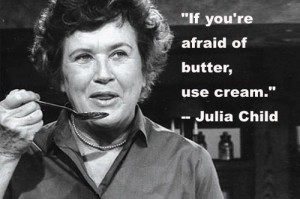
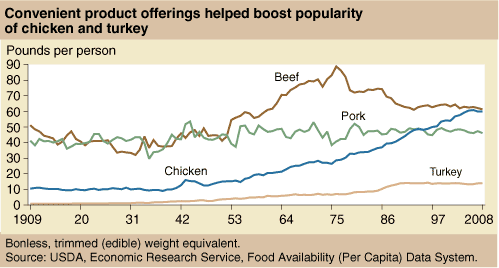
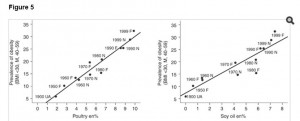
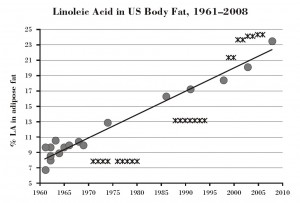
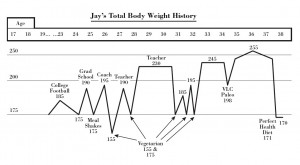




Recent Comments